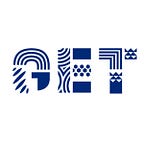Listen to innovate: Chinese voices of “building education new infrastructure” in post-COVID era
Infrastructure has been a top priority for China in 2020, especially new infrastructure including seven key areas: 5G networks, industrial internet, inter-city transportation and rail system, data centers, AI, ultra-high voltage power transmission, and new-energy vehicle charging stations.
According to the announcement at the 2020 National People’s Congress, China will invest an estimated $1.4 trillion over six years to 2025 in new infrastructure programs.
“It is important that the government spends more on concrete projects and pools resources to areas including the healthcare system, medical research, and education,” said Lu Ting, chief China economist with Nomura.
“Educational new infrastructure” related services providers are toB companies in general. ToC companies can achieve rapid growth as long as more investments are poured into customer acquisition, but toB companies need a relatively long-term to expand to a large scale. Hence, they have less market recognition by capitals, particularly overseas investors who know less about China’s national conditions.
But starting this year, toB companies’ valuation and investors’ have continued to soar. Guo Xifan, partner of Huaxia Taoli Capital, stressed at the GET2020 summit that “educational new infrastructure” companies will have awesome growth prospects, and put forward three trends based on his observations:
1. What China is now vigorously promoting is the transformation of Educational Informatization from 1.0 to 2.0. What is needed more than hardware is content and interaction.
2. Industrial upgrading. Companies in this sector are more like IT talents training provides, which help large state-owned enterprises to make digital upgrades. In the next 5 to 10 years, opportunities for toB business will lie in this field.
3. “Educational new infrastructure” companies’ valuation will tend to be reasonable.
Market attention to the “new education infrastructure” is mainly because it has played an essential role in distance learning amid the school closure. Intelligent working platforms enabling teachers to deliver lectures and manage the classes have benefited the most from the worldwide education disruption, to name a few: Alibaba’s DingTalk, Google’s Meet, and Microsoft’s Teams. But compared with overseas practice, the application scenarios in China are more complicated.
Tang Wei, product vice president of ULearning, believed: “Chinese providers have sufficient advantages of product features, but they lack an ecosystem. For example, Canvas, which has more than 300 partners worldwide, has various tools and content providers. This is a big challenge that Chinese companies face when going abroad.”
Plus, for newcomers in this market, users usually have less motivation for digital migration. “But Chinese companies have achieved good results in the Belt and Road countries,” said Tang.
Looking back to Chinese society, the possible widening of the digital divide is an unavoidable topic. Educational equity requires more approaches to bridge resources and learners. “Currently, there is no shortage of educational resources in China. The essence of online platforms is to connect effective resources to learners who need education in a personalized way,” said Xiaoxue, education senior director of Alibaba’s DingTalk.
Xiao Xue also shared her insights on the education system based on digitalization. Firstly, the supply mode for the education industry has changed. Companies should take customer needs as a priority and foresee customers’ needs in the future rather than sell the product and service. Secondly, the core of the Educational Informatization business has changed from technology empowerment to scenario empowerment. Last but not least, educational concepts have changed.
Aiming to achieve education modernization by 2035, China has set the objectives of establishing a modern education system of lifelong learning, with universal quality pre-school education, balanced compulsory education, enhanced vocational education, and more competitive higher education. Moreover, education for those with disabilities should also be improved.
“As the education system better serves the whole Chinese society, we also need to understand what is happening globally. I mean that attention should also be paid to the global changes in the way to fostering future-ready learners,” said Xiao Xue.
To get the most up-to-date China EdTech news and stories, please visit our official English website, subscribe to our weekly newsletter, or follow us on LinkedIn and Twitter.
